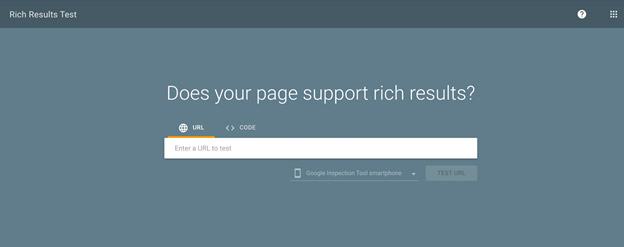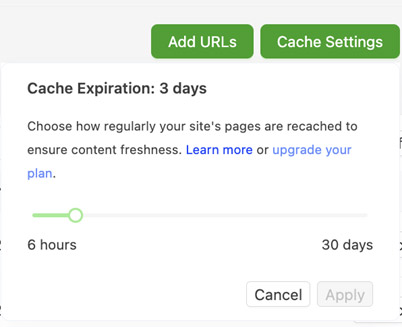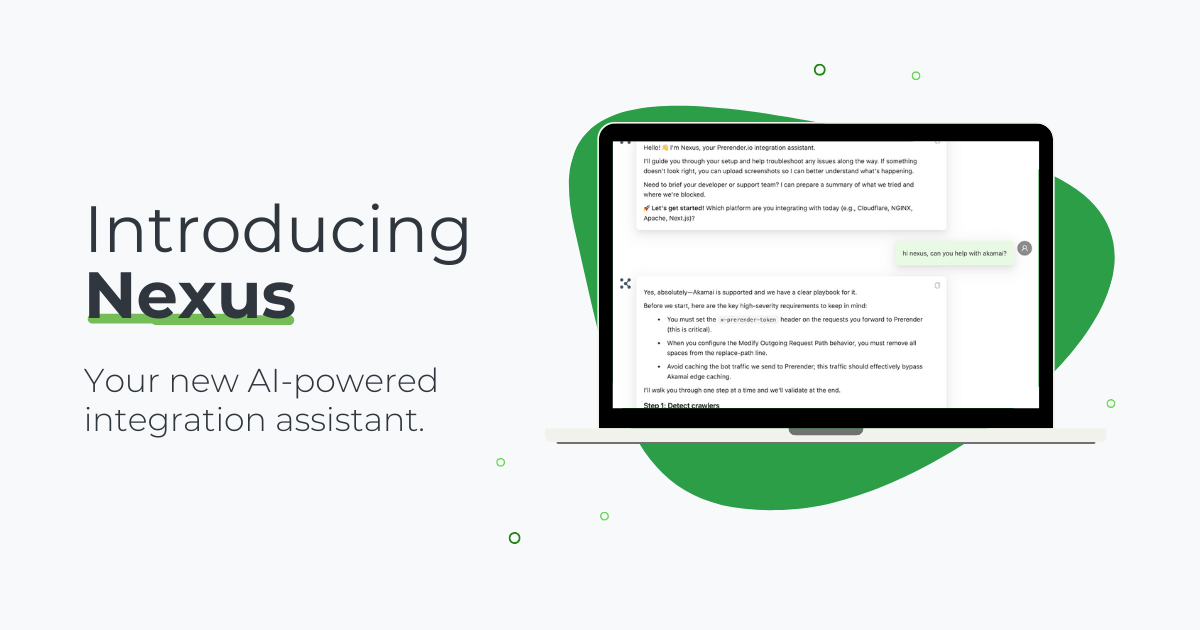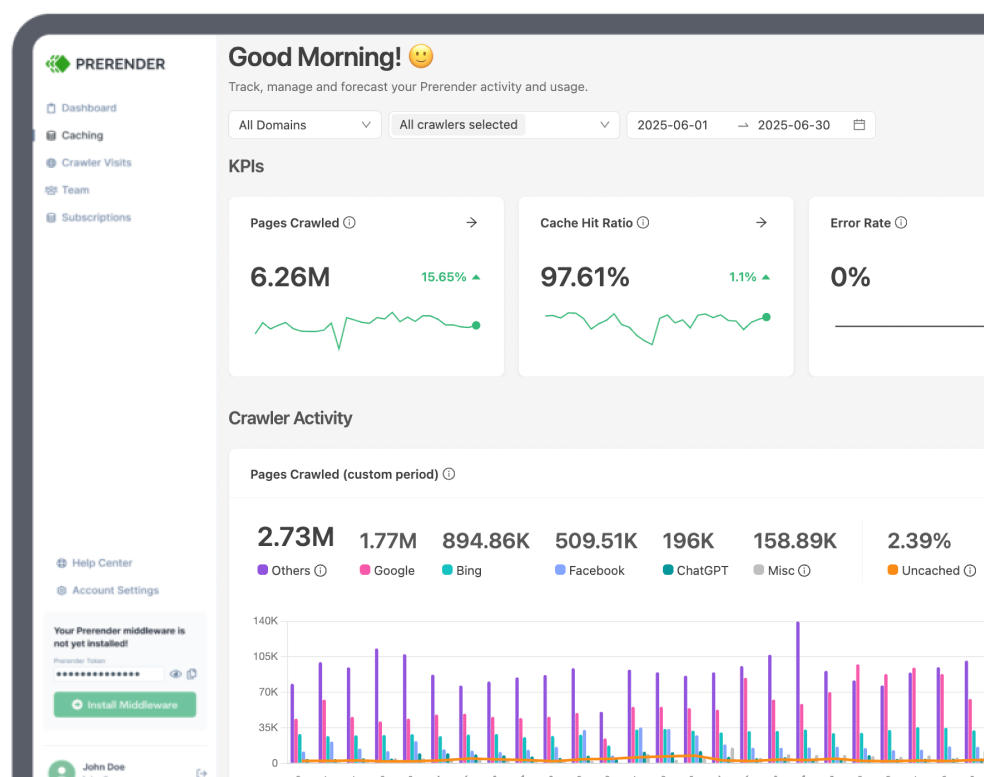As AI tools like ChatGPT and Google’s AI Overviews reshape how people search and shop online, product discovery is becoming less about keywords and more about context and content structure.
For ecommerce businesses, this shift toward AI shopping and conversational commerce means fewer users are landing on product pages. Even if those products are mentioned on AI results, there’s no guarantees of traffic, causing many online shops experience the zero-click search.
At the core of this change are LLM. But how does LLM actually choose which products to surface on AI-generated shopping recommendations? What signals do they rely on? And how can you ensure your ecommerce content is accessible to them?
We’ll explore how LLMs evaluate content, how technical SEO (including JavaScript rendering) impacts discoverability, and what ecommerce SEO teams can do and use to stay visible in an AI-driven product discovery landscape.
AI Shopping Recommendations Drive Zero-Click Searches
AI product recommendations have split the ecommerce businesses into two. While Amazon generated 35% of its revenue from AI recommendations, over 60% of searches in the U.S. and Europe now end without a single click to an external site.
In the U.S. alone, roughly 27% of searches are zero-click, marking a 24.4% increase year over year. What’s even more striking is that more than 75% of mobile searches don’t result in a website visit at all.
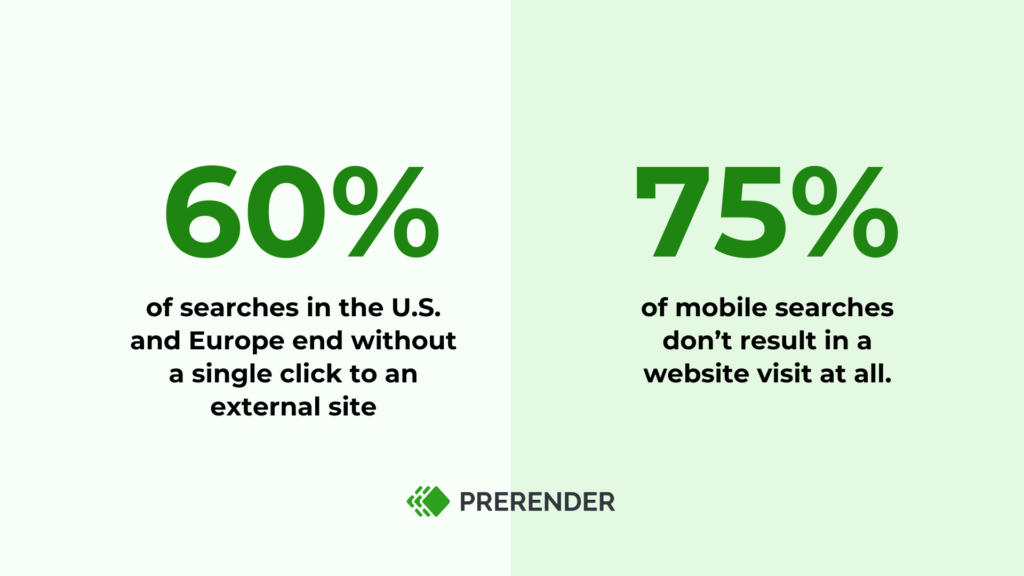
With more shoppers turning to AI platforms like ChatGPT for product suggestions, and Google’s AI Overviews delivering curated answers, many buyers are finding what they need without ever clicking through to a website. As a result, many experience a growing trend known as zero-click search.
For ecommerce sites that rely on click-throughs to drive revenue, this shift is a wake-up call. If you want your products to surface in AI-powered shopping recommendations, you’ll need to adapt.
We’ll give you golden tips for ecommerce LLM optimization, but first, let’s look at how LLMs actually work and what this means for your SEO and AEO strategies.
How LLMs Process Ecommerce Product Pages
LLMs don’t read product pages in the same way humans do. They break everything down into mathematical representations called vector embeddings, and you can think of them as numerical fingerprints that capture meaning.
While traditional search engines match your query to relevant keywords, here’s what happens when someone asks for product recommendations when AI shopping:
- Input processing: the system tokenizes product descriptions and user queries.
- Feature extraction: it identifies key attributes like brand, category, and features.
- Semantic understanding: it makes connections between related concepts.
- Multi-modal analysis: it processes text, images, and structured data together.
Let’s take an example to understand the ecommerce LLM process better.
- When you look up a product like “black leather boots” on an LLM, it doesn’t just see three words, but it also considers the context.
- It understands the relationship between color, material, product type, seasonal use, and style preferences.
- LLMs connect “hiking boots” with “outdoor activities” and “waterproof materials” without requiring you to explicitly state those connections.
To make this work, LLMs use a system called Retrieval-Augmented Generation (RAG).
LLMs Use Retrieval-Augmented Generation (RAG) Systems to Suggest Products
RAG is the engine behind most AI product recommendations. It’s like a super-smart librarian that can instantly find relevant information from millions of products.
With this RAG setup, the LLM is augmented with both internal knowledge sources and real-time internet access. The RAG process works like this:
- User query gets converted into a vector embedding (a numerical representation).
- The system searches multiple sources:
- Internal vector databases for similar product embeddings.
- Real-time web search APIs to find current products online.
- Ecommerce platforms and product catalogs via APIs.
- It retrieves the most relevant products from both stored data and live web results.
- The LLM generates a personalized response based on that combined context.
So, when a user asks a question, the system retrieves relevant data (e.g., product specs) from internal databases and searches the web for current product availability and pricing.
This means that, with RAG, AI isn’t guessing from memory alone or limited to pre-stored data. It’s pulling real-time content from both internal sources and the live internet to ground its product recommendations. And when your content is hidden behind JavaScript, your products may never show up on AI recommendation engines.
See other hidden content that can hurt your online visibility on Google, Google AI Overviews, and ChatGPT.
Why JavaScript-Heavy Ecommerce Sites Struggle with LLM Visibility
Most AI crawlers fetch raw HTML only. If your product data loads via client‑side JS, they’re likely see nothing. Infinite scroll, click‑to‑load elements, or SPA frameworks hide critical details behind JavaScript, leaving crawlers with an empty shell. Until you serve prerendered (HTML) versions of those pages, your online shop catalog is effectively invisible, and every other optimisation is wasted.
The consequence is stark: if AI crawlers can’t access your site’s content, your products are effectively invisible to LLM-driven discovery.
Traditional search engines like Google have invested in rendering engines to handle some JavaScript, but even Google’s index can struggle with heavily client-rendered sites. For newer AI crawlers (e.g., OpenAI’s GPTBot or others), you need to optimize your ecommerce site with the assumption that they only read the raw HTML as served.
The best solution to the content indexing for AI issue is using a prerendering tool like Prerender.io, helping you serve all AI crawlers the HTML version of your site. As a plug and play solution, Prerender.io can easily slot into your existing website tech stack, and it’ll serve a cached HTML version of your site, complete with all the product information, to this crawler.
This way, you get the best of both worlds. AI crawlers and Googlebot gain access to your products, making AI product discovery faster, while your customers still enjoy your complete, interactive JS ecommerce website that they love.
Once LLMs can access your site, they weigh several signals that drive visibility in AI search, and ultimately, recommendations.
Key Signals LLMs Use to Recommend Products and Content
When an LLM decides which product to recommend or which content to cite in an answer, it doesn’t use the same signals as Google’s classic ranking algorithm. The primary ranking factors LLMS look for are as follows.
| Signal | Why It Matters to LLMs |
|---|---|
| JavaScript accessibility | AI Crawlers can’t execute client‑side JS, so this content is hidden and ignored. |
| Semantic relevance | LLMs match intent, not just keywords; vague copy gets skipped. |
| Product‑quality indicators (ratings, reviews, and completeness) | Social proof and rich attributes signal trust and usefulness. |
| Commercial viability (stock and price freshness) | LLMs avoid recommending out‑of‑stock or stale‑priced items. |
| Structured product markup | Machine‑readable schema lets crawlers recognise items fast. |
| Information architecture | Clear structure lets models extract facts efficiently. |

Now that you know which signals LLMs look for, it’s time to see how to optimize for them.
How to Optimize Your Online Store for LLM Product Discovery
The optimization steps for LLM product discovery can be divided into different phases.
Phase 1: Strengthen Technical SEO for AI Crawlers
- Enable AI access by prerendering your JS content
Many ecommerce sites rely heavily on JavaScript to display product information, so the first and most critical step is implementing a prerendering solution that serves HTML versions of your content to AI crawlers. Without this foundation, all other optimization efforts will be ineffective since AI crawlers won’t be able to access your product data in the first place. - Test crawler visibility
Once prerendering is in place, verify that your content is visible to LLMs. Disable JavaScript in your browser and verify that product names, prices, and descriptions are still displayed. If they disappear, AI crawlers can’t see them either. - Audit current state
Next, you need to create a comprehensive audit spreadsheet tracking specific AI crawlers (e.g., GPT, Claude, Bard), document exactly what content they can and cannot see, and establish baseline metrics for comparison. Test your top 20 product pages across different AI systems to identify patterns in what gets recognized versus missed.
See the difference between auditing for SEO and GEO.
Phase 2: Improve Content Structure and Add Rich Schema Markup
- Add product schema
Add JSON-LD markup with product details to every product page. This tells AI systems exactly what they’re looking at. You can also go beyond basic product schema by implementing related schemas like Review, Offer, Organization, and BreadcrumbList. Learn more about different types of schema markup and how to apply them. - Include core properties
At minimum, include name, description, price, availability, brand, and SKU in your schema markup. Create a comprehensive schema property checklist with 30+ propertie, including aggregateRating, category, color, size, weight, material, manufacturer, model, gtin, mpn, and condition. Implement A/B testing to measure which schema properties most impact AI recommendation rates. - Validate markup
Use Google’s Rich Results Tool to check for errors and fix anything that shows as invalid. Set up automated daily validation checks using tools like Schema Markup Validator API, create alerts for any validation failures, and maintain a validation score dashboard. Test markup rendering across different AI systems to ensure compatibility. - Update product details regularly
Automate updates to your ecommerce product structured data, especially dynamic information such as pricing and inventory, as AI crawlers require fresh data for accurate results. With Prerender.io you can set cache freshness (TTL) and trigger instant invalidation via webhooks whenever your CMS or backend updates a product.
If no webhook fires, the cached HTML auto‑expires after the TTL (e.g., 6 hours) and Prerender.io rebuilds it on the next request. This allows crawlers to always receive the latest data while you still benefit from caching.
Phase 3: Optimize Product Data for LLM Relevance
- Rewrite product descriptions
Instead of listing the product features, explain what problems your product solves and who should buy it. Develop a content framework that includes problem statements, solution explanations, specific use case scenarios, and outcome descriptions. - Add use case examples
Include 3-5 specific scenarios like “Perfect for small apartments” or “Ideal for outdoor photography”, and structure examples in both paragraph and bullet point formats. - Create FAQ sections
Answer the top 10 questions customers ask about each product directly on the page. Analyze customer service inquiries, support tickets, and search queries to generate 15-20 targeted FAQ questions per product category. Structure FAQs with clear question-answer pairs and implement FAQ schema markup for enhanced AI understanding. - Apply logical structure for scannability
Use clear headings, short paragraphs, and bullet points. Make it easy to scan quickly and use descriptive heading text that includes key product terms.
Phase 4: Build Brand Trust and Domain Authority
- Collect customer reviews
Set up automated review collection workflows, implement review schema markup with detailed properties like reviewBody, reviewRating, and reviewer information. Target collecting 25+ reviews per product and analyzing which review characteristics correlate with higher AI recommendation rates.
Customer reviews offer valuable insights into product quality, use cases, and customer satisfaction that AI systems can factor into their recommendations. - Display trust signals
Prominently display security badges, return policies, and contact information. These signals help AI systems assess your business’s trustworthiness, which can influence whether they recommend your products over competitors’. - Ensure site security
Maintain SSL, fast loading (under 3 seconds), and mobile optimization. Implement comprehensive performance monitoring with Core Web Vitals tracking, set up automated security scanning, and establish performance benchmarks with alerts for any degradation. - Build domain authority
Higher authority signals to AI systems that your business is established and trustworthy, which can positively impact product recommendations. Implement marketplace optimization across major platforms (e.g., Amazon, eBay, etc.), and track domain authority metrics with tools like Ahrefs or Moz.
Phase 5: Provide Complete, Structured Product Information
- Complete product information
Ensure every product page includes comprehensive specifications, dimensions, compatibility information, materials, and any other relevant technical details that customers might need. Thorough product information helps AI systems better understand your products and match them to specific customer needs and queries. - Add visual context
Create detailed alt text for product images that describes not just what the product looks like, but also its benefits, use cases, and key features. This visual context helps AI systems process images to better understand and categorize your products for appropriate recommendations. Our tip is to develop alt text templates that include product name, key features, use context, and visual details.
Additionally, implement ImageObject schema markup for enhanced image understanding, and test different alt text approaches to see which generate better AI recognition and recommendations. - Include comparison data
Clearly articulate how your products differ from alternatives and competitors. Create comparison matrices for product categories and implement structured comparison sections with clear differentiators. It’s also recommended to use competitive analysis tools to identify positioning opportunities. - Maintain accuracy through regular site audits
Establish regular audit processes to ensure all product information remains current, accurate, and complete across your entire catalog. Inconsistent or outdated information can harm your credibility with AI systems and reduce the likelihood of product recommendations.
Consider implementing automated data validation rules, setting up quarterly manual audits with scorecards, and creating workflows for updating product information when changes occur.
Phase 6: Monitor LLM Visibility and Iterate Over Time
- Track AI mentions
Monthly, ask AI systems about your product categories. Note when your products are recommended versus competitors. See what AI mention tracking tool we recommend. - Analyze performance
Track which products get recommended most and identify what makes them successful. - Competitive analysis
Check how competitors structure their product pages and what gets them recommended. - Continuous improvement
Test one optimization per month and measure its impact on AI recommendations.
Adapting to the Future of AI-Led Product Discovery
LLM shopping is already sending billions of dollars to the brands with strong ecommerce product visibility. Unfortunately, most ecommerce sites don’t fall into that category. The good news is that you don’t need to rebuild your entire ecommerce stack to compete. You just need to follow the roadmap we just covered.
The foundation of LLM optimization for product discovery starts with one critical fix: making your content accessible to AI crawlers. Since most AI systems can’t render JavaScript, implementing a prerendering solution like Prerender.io immediately solves the biggest barrier to AI discoverability.
From there, the optimization path is clear. Structure your content for semantic understanding, build trust signals through reviews and accurate information, and monitor your performance across AI platforms. Each phase builds on the last, creating a comprehensive strategy that captures AI-driven traffic while maintaining your traditional search performance.
Ready to make the switch? Get started with Prerender.io for free today and turn every product page into fuel for AI‑powered recommendations.
Other ecommerce AEO blogs that may interest you:
- How to Optimize Marketplace SEO Listings for LLM Visibility
- AI SEO Optimization: A Technical SEO Guide
- Ecommerce AEO: 10 Tips to Help Your Products Show Up in ChatGPT
FAQs about AI Product Discovery and LLM Searches
Learn more about how LLMs influence product recommendations and what ecommerce businesses can do to optimize their visibility.
1. What Is Zero-Click Search and Why Is It Important?
Zero-click search occurs when users find answers or product recommendations directly on AI platforms without clicking through to external sites. This trend is significant for ecommerce businesses as it can lead to reduced traffic and sales. Understanding this shift is crucial for adapting marketing strategies to ensure products are still visible in an AI-driven landscape.
2. How Can Ecommerce Sites Optimize for LLM Visibility?
To optimize for LLM visibility, ecommerce sites should implement prerendering solutions to ensure that AI crawlers can access product data. Additionally, using structured data markup, improving content quality, and regularly updating product information are essential steps. These practices help LLMs understand and recommend products effectively.
3. Why Is JavaScript Accessibility Critical for LLMs?
JavaScript accessibility is vital because many AI crawlers can only read raw HTML. If product information is hidden behind client-side JavaScript, it may be ignored by LLMs, making products invisible in AI recommendations. Ensuring that product data is accessible in HTML format is crucial for visibility. Learn more about prerendering and AI visibility impact.
4. What Role Do Customer Reviews Play in LLM Recommendations?
Customer reviews serve as social proof and quality indicators that LLMs consider when making recommendations. High-quality, detailed reviews can enhance a product’s visibility in AI searches, as they signal trustworthiness and relevance. Collecting and displaying reviews effectively can significantly impact your ecommerce success in an AI-driven market.

